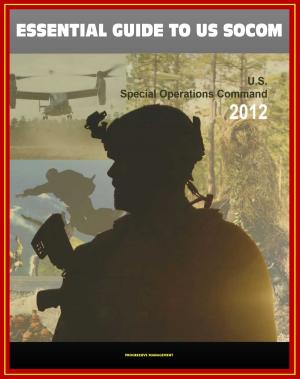Once Again, The Challenge to the U.S. Army During a Defense Reduction: To Remain a Military Profession
Nonfiction, History, Military, United States| Author: | Progressive Management | ISBN: | 9781301836567 |
| Publisher: | Progressive Management | Publication: | March 13, 2013 |
| Imprint: | Smashwords Edition | Language: | English |
| Author: | Progressive Management |
| ISBN: | 9781301836567 |
| Publisher: | Progressive Management |
| Publication: | March 13, 2013 |
| Imprint: | Smashwords Edition |
| Language: | English |
This monograph places the Army's 2011 campaign of learning about the Army as profession after a decade of war into the context of the just-initiated Department of Defense (DoD) reductions. The exact shape of those reductions and the defense strategy our down-sized land forces are to execute in the future are only now becoming clear as this monograph goes to press in early 2012. But what is already clear is that the U.S. Army will undergo a severely resource-constrained transition to a significantly smaller force than it sustained during the past decade of war. As with the post-Cold War downsizing during the Bill Clinton administration in the late 1990s, one critical challenge for the Army centers on the qualitative and institutional character of the Army after the reductions. Will the Army manifest the essential characteristics and behavior of a military profession comprised of Soldiers and civilians who see themselves sacrificially called to vocation? Will the Army perceive its service to country within a motivating professional culture that sustains a meritocratic ethic, or will the Army's character be more like any other government occupation in which its members view themselves as filling a job, motivated mostly by the extrinsic factors of pay, location, and work hours?
To get ahead of this coming challenge, in mid-2010 the Secretary of the Army and the Chief of Staff directed the Commanding General, Training and Doctrine Command (TRADOC), then General Martin Dempsey, to undertake a broad campaign of learning, involving the entire Department. The intent was to think through what it means for the Army to be a profession of arms and for its Soldiers and civilians to be professionals as the Army largely returns stateside after a decade of war and then has to quickly transition to the new era of Defense reductions. That campaign has been ongoing for a year now and several new conceptions of the Army as a military profession have been produced, along with numerous initiatives currently being staffed to strengthen the professional character of the Army as it simultaneously recovers from a decade of war and transitions through reductions in force. They form the descriptive content of this monograph.
One of those conceptions is the renewal of a unique aspect of the identity and role of the strategic leaders of the Army—the sergeants major, colonels, general officers, and members of the Senior Executive Service—as the "stewards of the Army profession." This is true because they are the only cohort of leaders who control the Army's major management and enterprise level systems, which have the capability to shape and strengthen the Army as a military profession. It is to them, and to those who support them in the difficult judgments that they must make in the next few years, that this monograph is particularly focused.
This monograph places the Army's 2011 campaign of learning about the Army as profession after a decade of war into the context of the just-initiated Department of Defense (DoD) reductions. The exact shape of those reductions and the defense strategy our down-sized land forces are to execute in the future are only now becoming clear as this monograph goes to press in early 2012. But what is already clear is that the U.S. Army will undergo a severely resource-constrained transition to a significantly smaller force than it sustained during the past decade of war. As with the post-Cold War downsizing during the Bill Clinton administration in the late 1990s, one critical challenge for the Army centers on the qualitative and institutional character of the Army after the reductions. Will the Army manifest the essential characteristics and behavior of a military profession comprised of Soldiers and civilians who see themselves sacrificially called to vocation? Will the Army perceive its service to country within a motivating professional culture that sustains a meritocratic ethic, or will the Army's character be more like any other government occupation in which its members view themselves as filling a job, motivated mostly by the extrinsic factors of pay, location, and work hours?
To get ahead of this coming challenge, in mid-2010 the Secretary of the Army and the Chief of Staff directed the Commanding General, Training and Doctrine Command (TRADOC), then General Martin Dempsey, to undertake a broad campaign of learning, involving the entire Department. The intent was to think through what it means for the Army to be a profession of arms and for its Soldiers and civilians to be professionals as the Army largely returns stateside after a decade of war and then has to quickly transition to the new era of Defense reductions. That campaign has been ongoing for a year now and several new conceptions of the Army as a military profession have been produced, along with numerous initiatives currently being staffed to strengthen the professional character of the Army as it simultaneously recovers from a decade of war and transitions through reductions in force. They form the descriptive content of this monograph.
One of those conceptions is the renewal of a unique aspect of the identity and role of the strategic leaders of the Army—the sergeants major, colonels, general officers, and members of the Senior Executive Service—as the "stewards of the Army profession." This is true because they are the only cohort of leaders who control the Army's major management and enterprise level systems, which have the capability to shape and strengthen the Army as a military profession. It is to them, and to those who support them in the difficult judgments that they must make in the next few years, that this monograph is particularly focused.















